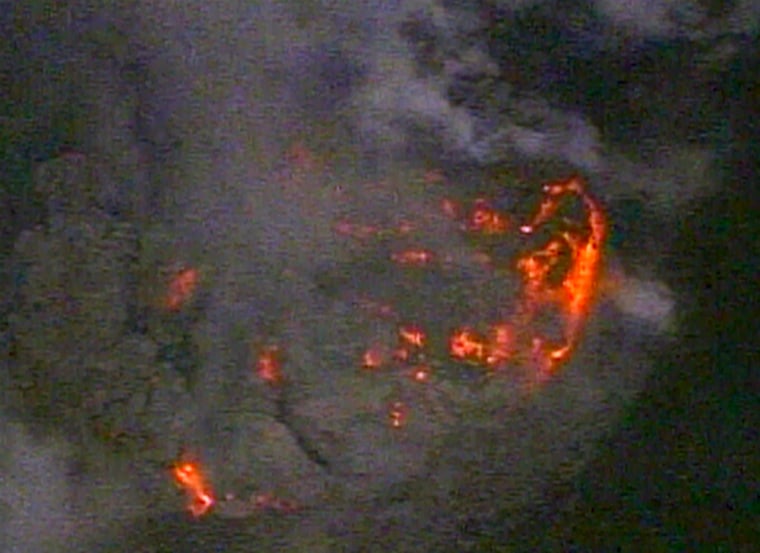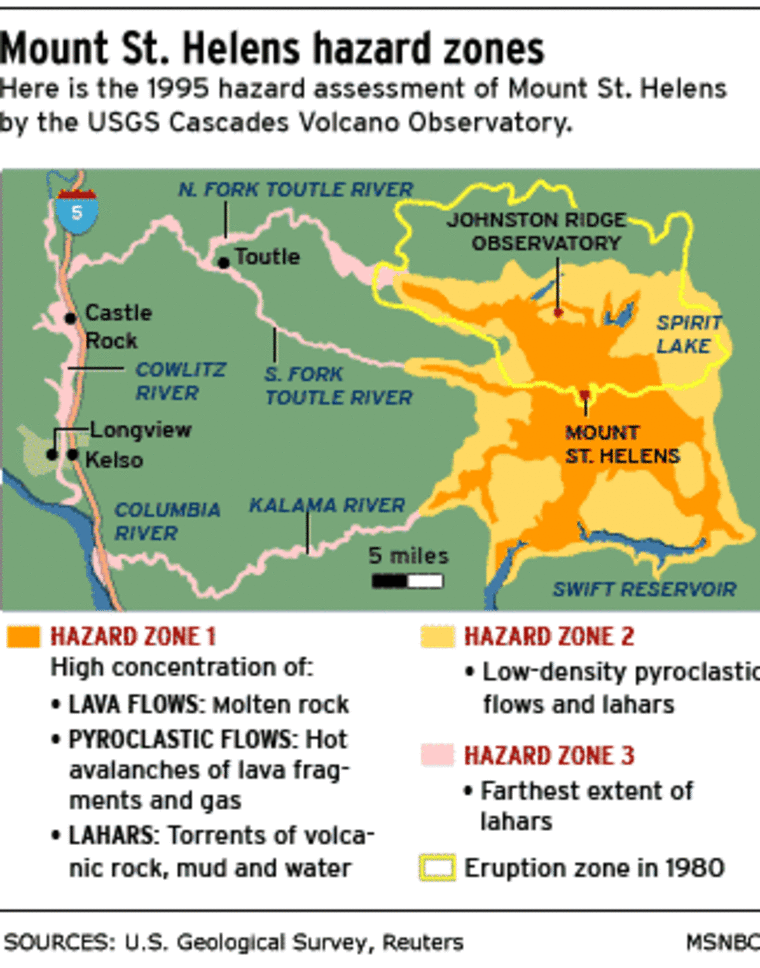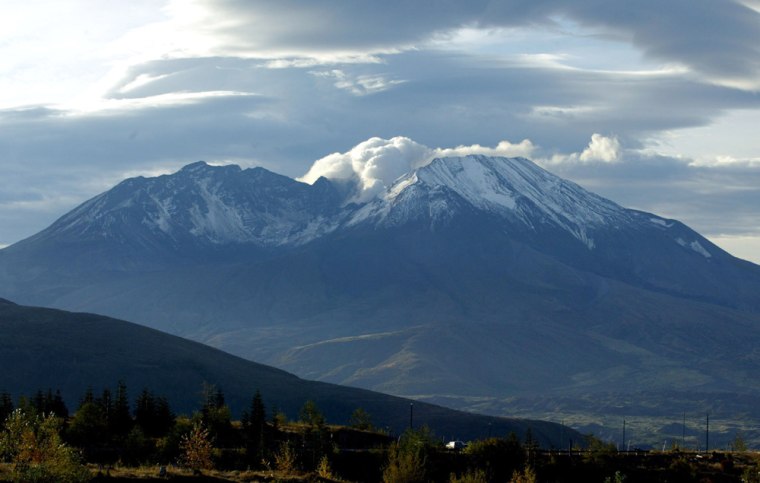The molten rock rising inside Mount St. Helens is giving the peak an eerie red glow at night.
Lava has been climbing to the surface at nearly 1,300 degrees for the past few days in a process that scientists said Wednesday could go on for days, weeks or months. At night, low-hanging clouds and the steam rising from the volcano reflect the glow of the red-hot stone inside the crater.
Scientists said they do not know how long the eruption might continue, or whether it will be marked by explosive blasts. But they said any eruption would probably be far less dangerous than the cataclysmic explosion in 1980 that blasted away much of the mountaintop and killed 57 people.
The area immediately around the mountain remains closed.
The molten rock, or magma, rising inside the mountain has been depositing itself on the crater floor inside the volcano, halfway up the 8,634-foot peak, creating a “fin” of rock estimated Tuesday at 60 to 90 feet tall and 150 to 180 feet wide.
Scientists calculate its growth rate at about 2 to 3 cubic meters a second, said Jeff Wynn, chief scientist for volcano hazards. That is enough new rock to fill an Olympic-size swimming pool in about 15 minutes.
“’Til you’re actually down on it, you can’t imagine how huge it is,” Wynn said.

The fin, at about 750 degrees, has a pinkish cast “like medium roast beef,” said geologist Tina Neal of the U.S. Geological Survey.
The glowing rock itself can be seen only from above, from aircraft.
Lava first reached the surface Monday, following 2½ weeks of rumblings and steam and ash bursts from the mountain.
First dome activity in years The last dome-building activity at St. Helens began in the months after its deadly May 1980 eruption and lasted six years. Layers of emerging rock gradually formed a rocky dome nearly 1,000 feet tall at the center of the crater floor. The top of the new dome is almost level with the old one just to the north.

The mountain had been shaking since Sept. 23, with periods of sharp jolts — up to magnitude 3.3 — occurring as often as four times a minute at the height of seismic activity.
Explosive eruptions are still possible and often follow lava extrusion, said John Pallister, a volcanologist with the USGS.
The 1980 eruption killed 57 people, leveled trees for miles around and covered much of the Pacific Northwest with ash.
